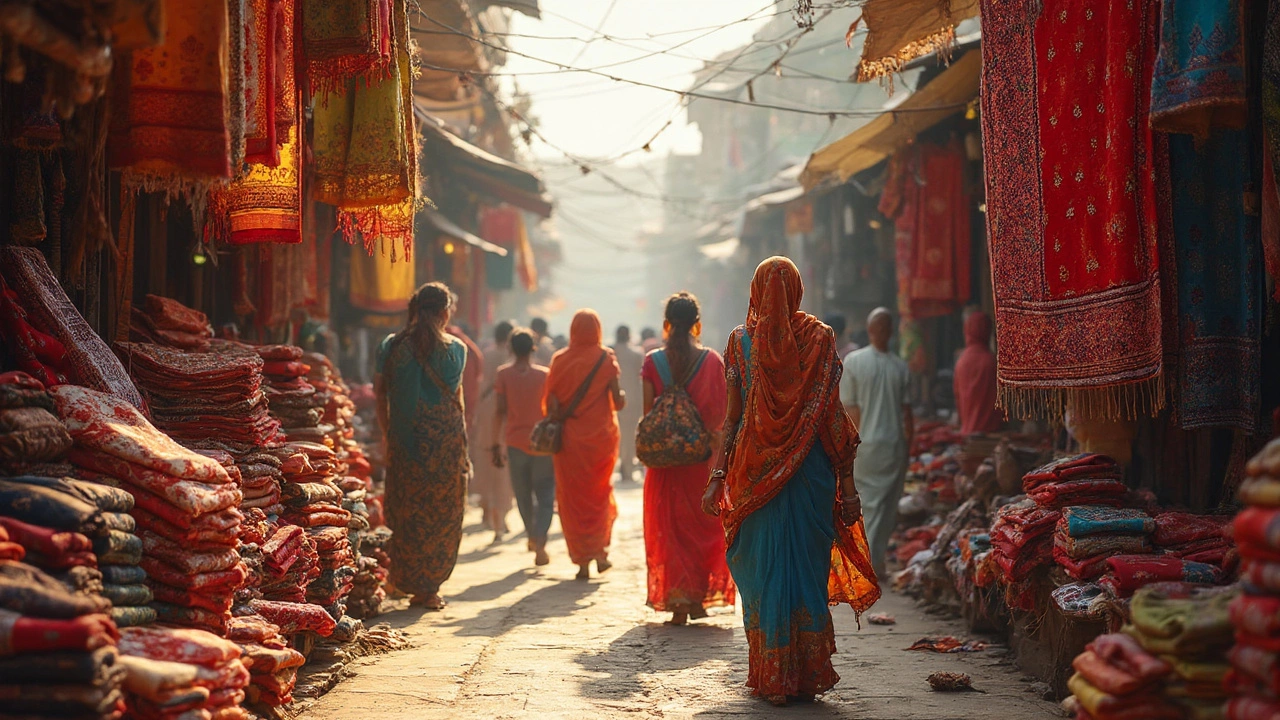- Start Manufacturing Your Idea: Step‑by‑Step Guide Oct 8, 2025
- Are Tata Cars Sold Internationally? Exploring Global Reach Mar 2, 2025
- Chemical Manufacturers India: Which State Leads Production? Jun 16, 2025
- King of Steel: Who Reigns Supreme in Steel Manufacturing? Mar 10, 2025
- Discovering the Priciest Wood for Indian Furniture Feb 3, 2025
Bandhani – The Vibrant Tie‑Dye Tradition of India
Ever seen a piece of cloth dotted with tiny, perfectly round patterns and wondered how it got that look? That’s bandhani, a centuries‑old tie‑dye technique that turns simple cotton or silk into eye‑catching art. It started in the desert states of Gujarat and Rajasthan, but today you’ll find it on runway shows, home décor, and even corporate uniforms.
How Bandhani Is Made
The magic begins with tiny knots. Artisans tie the fabric with goat‑hair threads in precise spots, creating a map of dots, squares, or intricate motifs. Once the knots are set, the cloth is dipped in natural dyes – usually indigo, turmeric, or cochineal – and left to soak. After each dip, the fabric is rinsed, the knots are softened, and the process repeats until the desired shade appears. When the knots are finally removed, the dyed areas stay light while the surrounding fabric holds the deep color, giving bandhani its signature contrast.
Regional Styles and Modern Twists
Gujarat’s bandhani is famous for bright reds and deep blues, often featuring tiny circles that look like a night sky. Rajasthan prefers earthy tones and larger geometric patterns that echo the desert’s dunes. In recent years, designers have mixed bandhani with contemporary cuts – think bandhani‑printed jackets, office shirts, and even tech‑grade fabrics for uniforms. This mix keeps the tradition alive while meeting today’s demand for sustainable, locally made textiles.
If you’re hunting for authentic bandhani, look for a few key signs. First, the ties should be uniform; uneven knots usually mean a machine‑run imitation. Second, natural dyes create a soft, slightly uneven hue; synthetic dyes tend to be overly bright and uniform. Finally, a reputable maker will share the story of the artisan or the region the piece comes from – that’s a good clue you’re getting the real deal.
Why does bandhani matter for businesses like Rise Corp? The answer lies in the growing focus on eco‑friendly, culturally rich materials. Companies are sourcing bandhani fabrics for corporate merch, employee uniforms, and promotional items because they showcase Indian heritage while using low‑impact dyes and hand‑crafted methods. Partnering with authentic weavers also supports local economies, aligning with corporate social responsibility goals.
Want to add bandhani to your wardrobe or office? Start small with accessories – scarves, ties, or pocket squares – and see how the patterns pop against solid colors. For larger projects, ask your supplier about blend options; a cotton‑silk mix offers comfort and a luxe feel without the high cost of pure silk. Remember, proper care means hand‑washing in cold water and avoiding harsh chemicals to keep the colors vibrant.
In short, bandhani isn’t just a pretty pattern; it’s a living craft that blends art, history, and modern sustainability. Whether you’re a fashion lover, a brand manager, or just curious about Indian textiles, understanding the basics helps you spot quality and appreciate the skill behind each dot. So next time you see that tiny circle of color, you’ll know the story it tells and why it’s worth preserving.
Gujarat Famous Cloth: The Story Behind India's Textile Powerhouse
- Aarav Sekhar
- May 25, 2025
Gujarat is a giant in the Indian textile scene, best known for its colorful and creative fabrics like bandhani and Patola. This article breaks down what makes Gujarat’s cloth unique, from the traditional techniques used to their global impact. Get familiar with must-know textile hotspots and find out which types of cloth you should check out if you want a real taste of Gujarat. Whether you're a buyer, a traveler, or just curious, you'll walk away with handy tips and surprising facts. The journey of Gujarat’s textiles is more than just fabric—it's full of culture, innovation, and craft.
